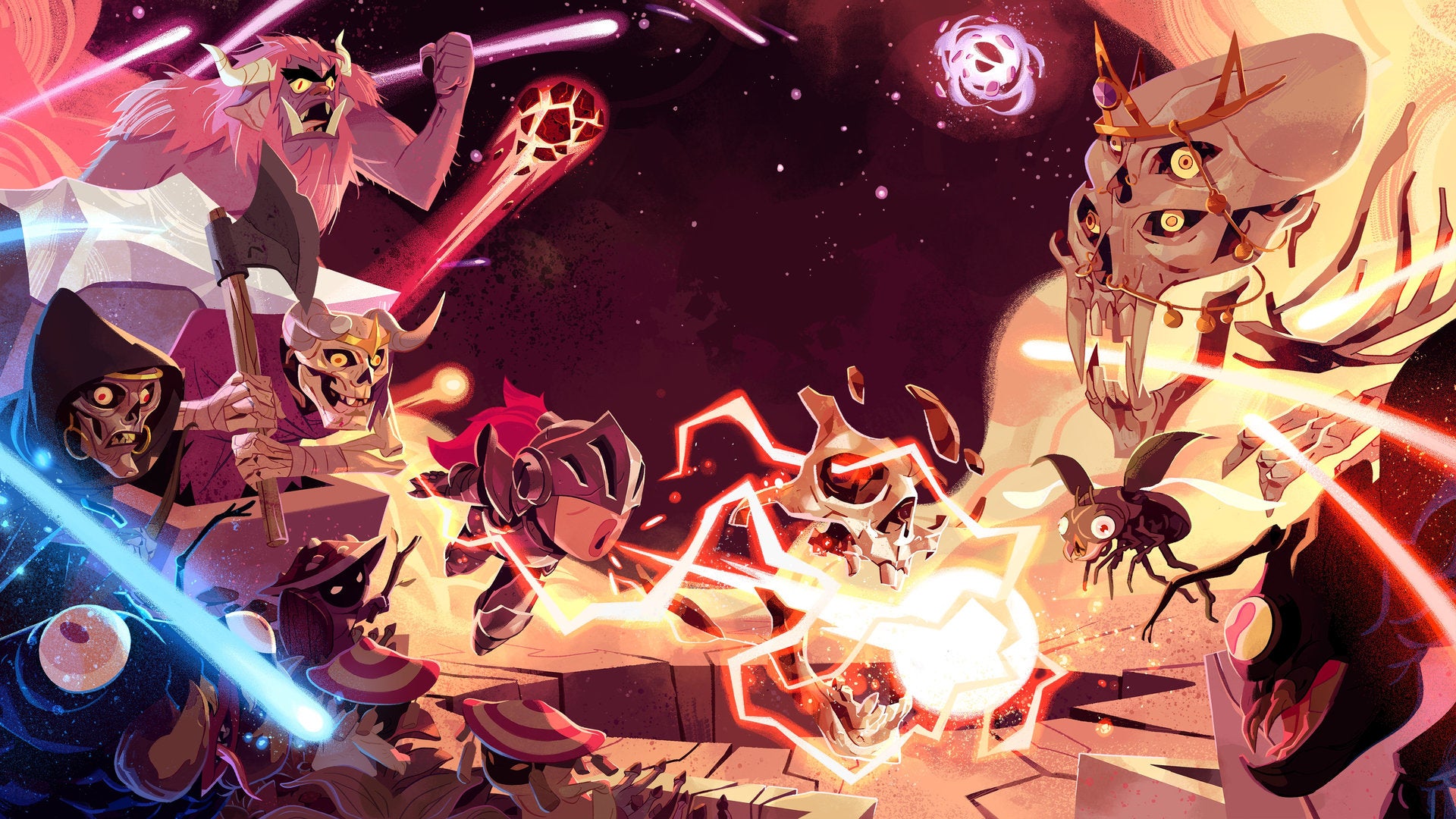BALL x PIT (pronounced Ball Pit) is just as fun as the ones you’d play in as a kid, except here there’s no chance of catching a disease from it. Not to be reductive, but this is essentially Breakout meets Vampire Survivors meets Stardew Valley, albeit with its own flavor and dressing. This is a game of endless combinations of builds and loadouts for an action roguelite with unique twists to keep you coming back for “just one more run”. In general, I think ‘addiction’ is too strong a word in almost any context, especially games. When it comes to BALL x PIT, it’s evident that it has all the hooks to be the next fixation to enter the zeitgeist.
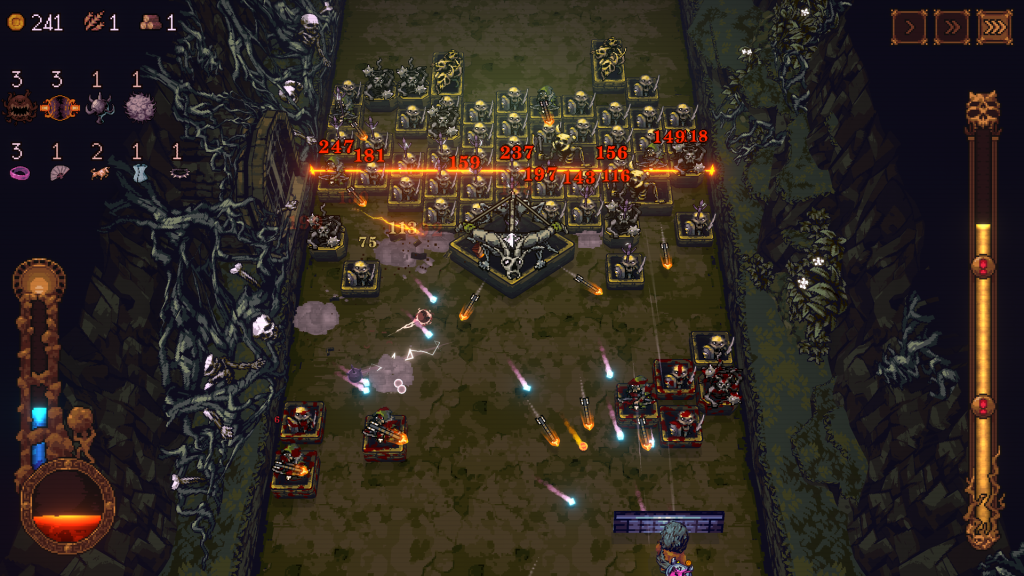
As the story goes, Ballbylon has fallen. As a result, an endless chasm has appeared, and it’s time to dive into the depths of this abyss to end this blight. The game is split into two parts, the first is a hybrid of pinball or Arkanoid-style gameplay with an action roguelite styling similar to Brotato. The other half of the game is like Coral Island where you’ll manage a homestead, and get to customize every aspect of its design and placement, and even rearrange them as needed or desired. This isn’t an endless game, so expect to finish the game at or around 30 hours.
With you now the praetor of New Ballbylon, you’ll have to plant crops, wheat, and materials like wood and stone to harvest for materials. These materials are to build structures like housing that can unlock new characters to play as. As you work the land available, it can be rearranged as you see fit, as it’s meant to be modular in design. You can harvest once between runs, where a cooldown gets applied. Now, you can cheese harvesting by starting a new run and dying quickly, but honestly, that’s a bad way to go about it. For one the act of playing the game is really good, but secondly a run can let you acquire resources along the way, and even get a large payout upon clearing it. Coins earned can be spent to expand the available land or purchase new buildings. As buildings are placed, you’ll need to build them, which can only happen when characters are sent off to harvest, and bounce off the building a requisite number of times. Additionally, the balls available to run a harvest is based on the number of characters in your roster, so there’s incentive to unlock as many characters as possible. It’s a really neat system to engage with that’s not too demanding to want to engage with it every time you complete a run.
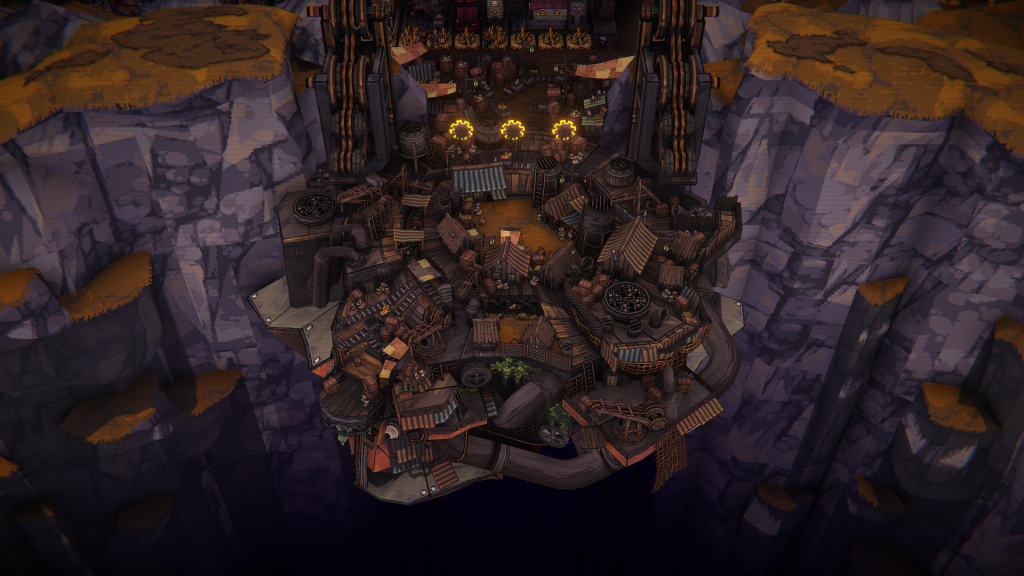
When you start a run, each character you have at your disposal will all have a different set of starting stats, weapon, and elemental damage that they apply with attacks. Auto shooting is off by default, but you can turn it on to be a more familiar to other action roguelikes. Though there’s a movement penalty when you’re shooting, so if you’re always shooting, you’ll always be slowed slightly. Your character has health and experience. Defeating enemies will see them drop gems which can be collected for experience. Collect enough experience and you’ll level up, where attributes will be applied automatically. This is turned on by default, though you can turn on leveling up manually, if you want. With each level up, you can select a new weapons that take the form of balls or passive abilities such as lasers that damage entire rows or columns, ghosts that pass through all enemies, vampiric attacks to gain health, and many more. Over time they’ll drop coins, health, and fusions. There are three forms: fusion, fission, and evolution. Fission will level up a singular weapon. Fusion will let you combine two weapons, freeing up a slot to acquire a new weapon. And an evolution will transform weapons entirely. This creates endless combinations and build types for any player to not have the same run twice.
Playing through the levels of the game sees you traversing eight layers, like a cake you cut into. You’ll take on enemies in deserts, graveyards, savannas, voids, snow, and even a shroom-laden land. Starting a layer will always start out with a width of seven enemies, and by the end before you reach the boss will expand to thirteen. While on paper this doesn’t seem like a lot, the sheer number of enemies increase almost two-fold. It’s something that really gets felt, but the progression is so gradual that it doesn’t become too overwhelming, too fast. Having a bigger play area to move around in as things get tougher is a wonderful trade-off. And as you collect your weapons and power-ups, you’ll progress through stages of two mini-bosses, and finally meeting the boss of the layer. Boss fights are distinct from one another, and are always fun to engage in.
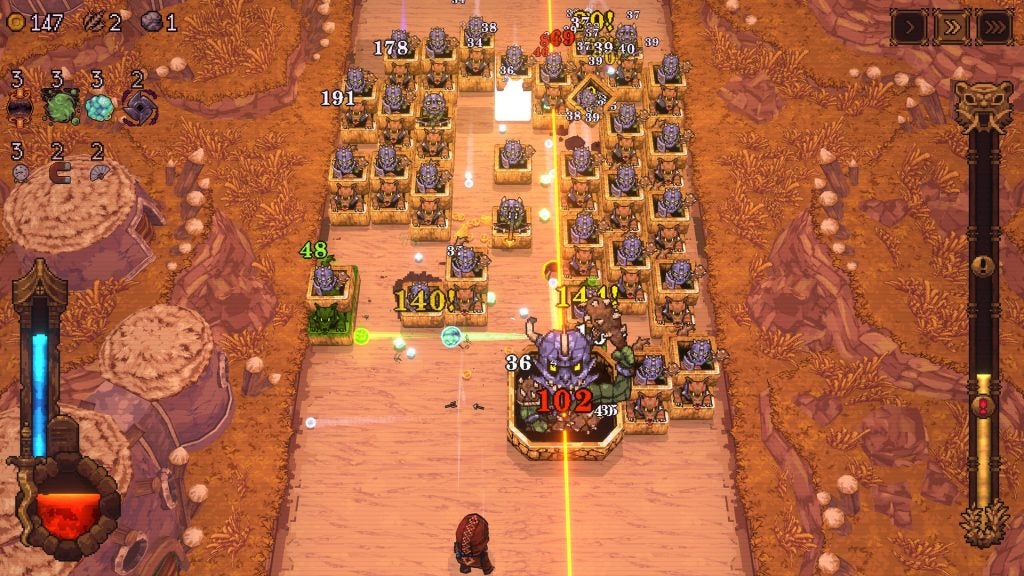
Each character imbues different traits such as endurance, strength, leadership, speed, dexterity, and intelligence. There are sixteen characters to play as, with fifteen you will have to unlock in order to play as them. The requirements do grow with each unlock, yet it’ll become easier as you grow stronger and understand the game more. The first one you start out with is The Warrior, a knight-like character that inflicts bleed upon his enemies. Next is the Itchy Finger, a sheriff who sets hurts his enemies with a burn effect. Next is The Repentant, whose icy exterior makes enemies freeze before him to shatter into hundreds of tiny pieces. Another early standout are The Cohabitants, what seems to be a pair of aliens who utilize their many children to inflict damage who have a unique aiming system unlike other characters. Now the rest of the characters to choose from I’d rather leave as a surprise to unlock and discover on their own. The game encourages you to beat each level with every character, where some progression is gated behind this, but it’s also fun to get diversified with your character portfolio.
With so many upgrades, unlocks, and ways to grow, it can seem daunting. Characters who level up during play are kept, giving them an advantage upon starting a new run. This becomes a snowball effect in that if you don’t beat any given layer, you will eventually as you become strong enough or skilled enough to do so. As is with the genre, the grind is necessary element, but it’s also part of the fun from developer, Kenny Sun.
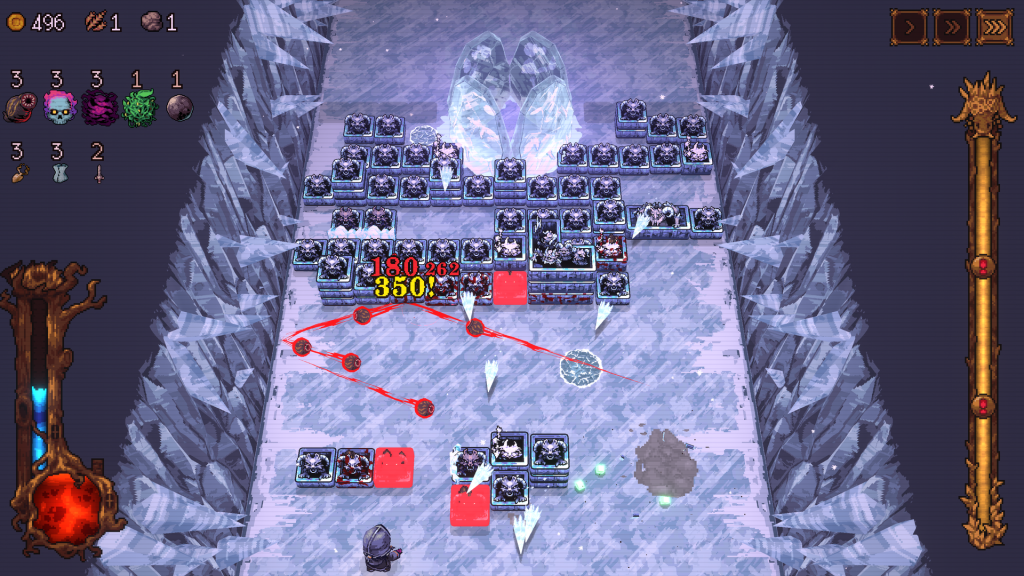
There’s not a lot in the way of graphical settings for BALL x PIT, but it looks and plays great, even on the Steam Deck. The only setting I disabled was vignetting, and the game supports ultrawide monitors. The pixel art is some of the best I’ve seen in recent games that is authentic. It operates at top performance at all times, and will run on just about anything.
My PC Specs:
– Windows 11 Pro
– Intel Core i9 13900K @ 5.8GHz
– ASUS ROG RYUJIN II 360 ARGB AIO Liquid CPU Cooler
– G.SKILL TRIDENT Z5 6000MHZ 64GB (32×2) DDR5 RAM
– ASUS ROG Strix GeForce RTX 4080 16GB GDDR6X
– WD_BLACK SN850X M.2 (4 TB)
– LG UltraGear 34GP950B-G (21:9 Ultrawide @ 3440×1440)
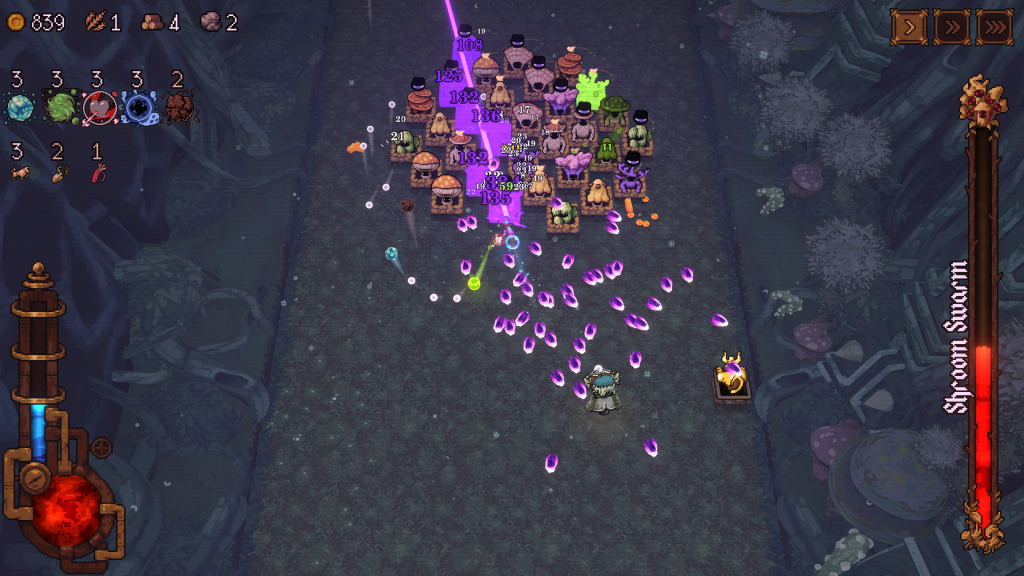
BALL x PIT feels like the next big thing, an evolution in all the genres it exists in. This is a game you’re meant to be restarting after deaths, beginning new runs after successes, and treadmill of progression. There’s never a sense of going backwards or feeling stuck, as there’s always something to do. BALL x PIT is simply not to be missed, and sure to be your newest obsession.
A Steam code was provided in advance by the publisher for review purposes
